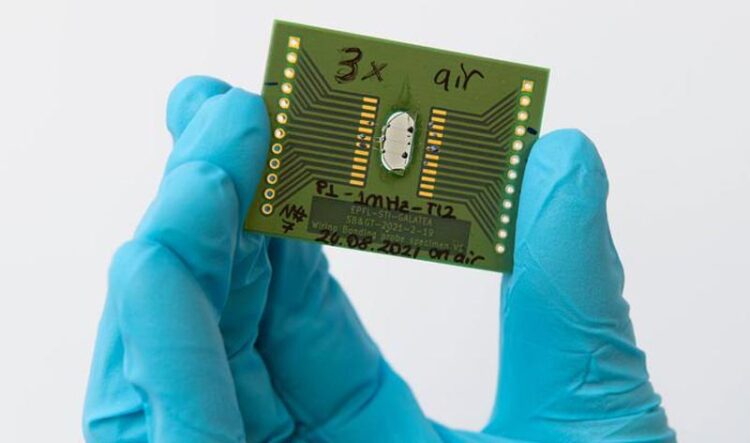Turning glass into a ‘transparent’ light-energy harvester

Turning tellurite glass into a ‘transparent' light-energy harvester by etching semiconducting patterns using femtosecond laser light.
Credit: EPFL / Lisa Ackermann
What happens when you expose tellurite glass to femtosecond laser light? That’s the question that Gözden Torun at the Galatea Lab, in a collaboration with Tokyo Tech scientists, aimed to answer in her thesis work when she made the discovery that may one day turn windows into single material light-harvesting and sensing devices. The results are published in PR Applied.
Interested in how the atoms in the tellurite glass would reorganize when exposed to fast pulses of high energy femtosecond laser light, the scientists stumbled upon the formation of nanoscale tellurium and tellurium oxide crystals, both semiconducting materials etched into the glass, precisely where the glass had been exposed. That was the eureka moment for the scientists, since a semiconducting material exposed to daylight may lead to the generation of electricity.
“Tellurium being semiconducting, based on this finding we wondered if it would be possible to write durable patterns on the tellurite glass surface that could reliably induce electricity when exposed to light, and the answer is yes,” explains Yves Bellouard who runs EPFL’s Galatea Laboratory. “An interesting twist to the technique is that no additional materials are needed in the process. All you need is tellurite glass and a femtosecond laser to make an active photoconductive material.”
Using tellurite glass produced by colleagues at Tokyo Tech, the EPFL team brought their expertise in femtosecond laser technology to modify the glass and analyze the effect of the laser. After exposing a simple line pattern on the surface of a tellurite glass 1 cm in diameter, Torun found that it could generate a current when exposing it to UV light and the visible spectrum, and this, reliably for months.
“It’s fantastic, we’re locally turning glass into a semiconductor using light,” says Yves Bellouard. “We’re essentially transforming materials into something else, perhaps approaching the dream of the alchemist!”.
Journal: Physical Review Applied
DOI: 10.1103/PhysRevApplied.21.014008
Article Publication Date: 5-Jan-2024
Media Contact
Hillary Sanctuary
Ecole Polytechnique Fédérale de Lausanne
presse@epfl.ch
Office: +41-21-693-2222
Media Contact
All latest news from the category: Materials Sciences
Materials management deals with the research, development, manufacturing and processing of raw and industrial materials. Key aspects here are biological and medical issues, which play an increasingly important role in this field.
innovations-report offers in-depth articles related to the development and application of materials and the structure and properties of new materials.
Newest articles

Innovative 3D printed scaffolds offer new hope for bone healing
Researchers at the Institute for Bioengineering of Catalonia have developed novel 3D printed PLA-CaP scaffolds that promote blood vessel formation, ensuring better healing and regeneration of bone tissue. Bone is…

The surprising role of gut infection in Alzheimer’s disease
ASU- and Banner Alzheimer’s Institute-led study implicates link between a common virus and the disease, which travels from the gut to the brain and may be a target for antiviral…

Molecular gardening: New enzymes discovered for protein modification pruning
How deubiquitinases USP53 and USP54 cleave long polyubiquitin chains and how the former is linked to liver disease in children. Deubiquitinases (DUBs) are enzymes used by cells to trim protein…



